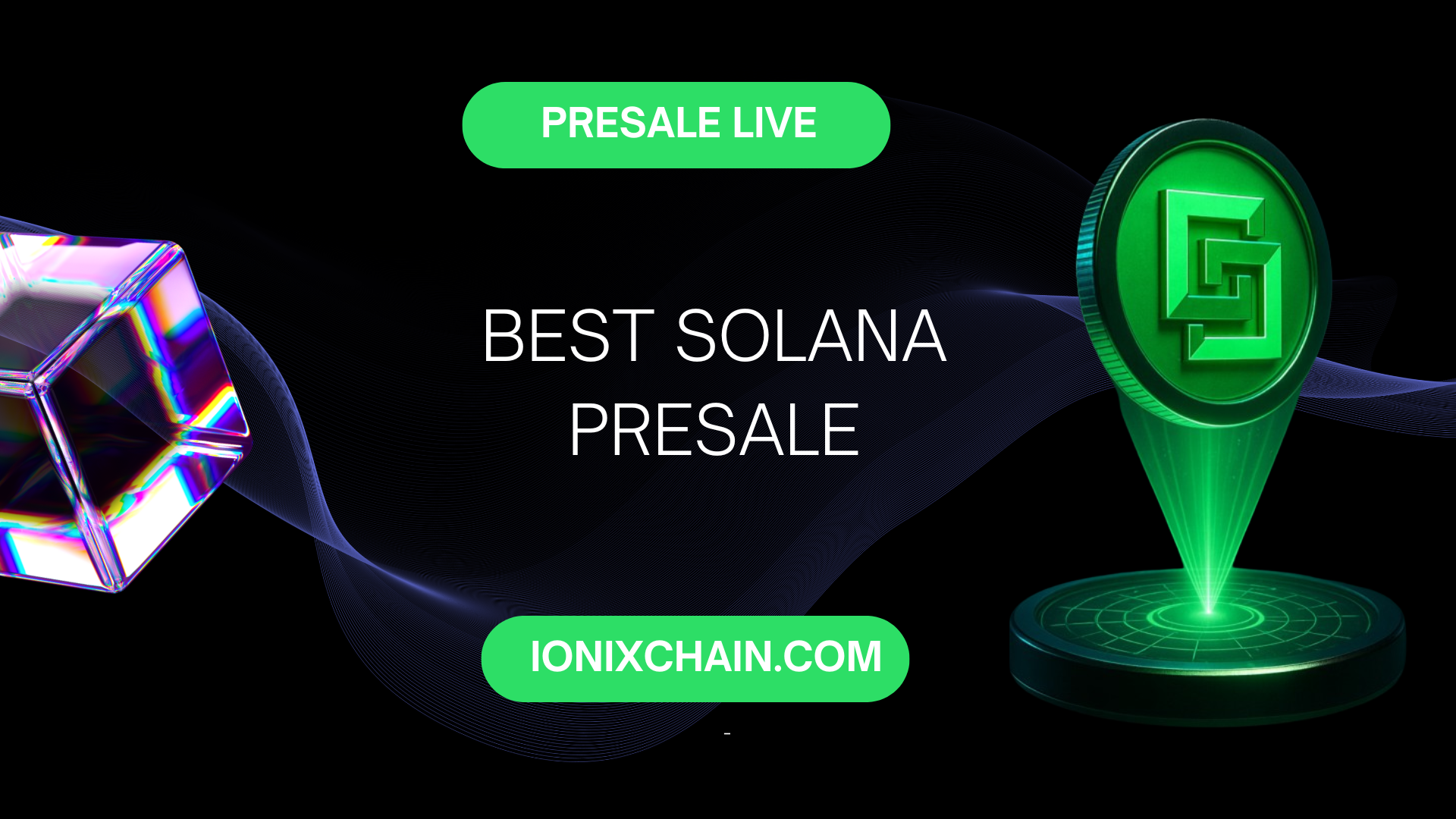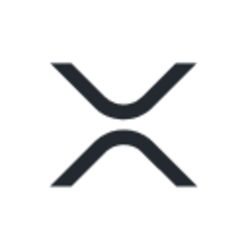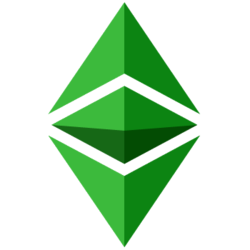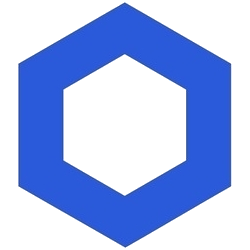Coin Launch Space is here to give you clear, accurate, and trustworthy information about crypto. Our team is made up of experts with real experience in crypto, finance, and new tech. Every article and page we publish is carefully reviewed by skilled editors to make sure it’s up to our high standards. We take pride in offering honest, easy-to-understand reviews based on real knowledge. Check out our editorial policy and see how we test and review crypto assets.
The cryptocurrency presale landscape in 2025 has witnessed the emergence of IONIX Chain, a blockchain project positioning itself at the convergence of artificial intelligence and distributed ledger technology. IONIX Chain describes itself as a revolutionary Layer 1 blockchain fully powered by proprietary Quantum AI Consensus, claiming to achieve 500,000 transactions per second with sub-second finality. The project’s integration strategy extends beyond its native infrastructure to include seamless compatibility with major ecosystems like Ethereum, Solana, and Binance Smart Chain via advanced cross-chain bridges.
The IONIX Chain project represents an ambitious technological undertaking that seeks to address persistent challenges in blockchain scalability while introducing artificial intelligence capabilities into consensus mechanisms and smart contract execution. The project combines innovative technological approaches including Quantum AI Consensus, Adaptive Smart Contracts, and comprehensive cross-chain interoperability with a sustainable economic model that shares network revenue with token holders.
Why IONIX Chain Qualifies as a Best Solana Presale in 2025
While IONIX Chain operates as an independent Layer 1 blockchain protocol, its classification among the best Solana presales in 2025 stems from multiple strategic integrations. The platform implements seamless cross-chain bridges that connect Ionix to Ethereum, Solana, and Binance Smart Chain, enabling participants in the Solana ecosystem to engage with the project directly. Furthermore, the presale accepts multiple cryptocurrencies including Solana, alongside Bitcoin, Ethereum, and various stablecoins including USDT and USDC on both ERC-20 and BEP-20 networks.
This multi-chain approach positions IONIX Chain within the broader Solana investment ecosystem while maintaining its identity as an independent blockchain infrastructure project. The cross-chain architecture theoretically allows Solana users to participate in the IONIX ecosystem while maintaining their preferred blockchain environment, representing a strategic bridge between multiple cryptocurrency communities.
Advanced Technology Architecture and Innovation
Quantum AI Consensus Mechanism
The technological foundation of IONIX Chain centers on what the project describes as Quantum AI Consensus. The platform combines Proof-of-Stake with proprietary AI-driven algorithms, delivering what is characterized as real-time security, scalability, and reliability for seamless operations. This hybrid approach theoretically merges traditional blockchain consensus models with artificial intelligence optimization to enhance transaction processing and network efficiency.
The architectural implementation includes a hybrid PoS-Directed Acyclic Graph (DAG) architecture designed to deliver unmatched performance, processing transactions at 500,000 TPS with sub-second finality, ensuring scalability even under heavy network loads. This technical specification, if successfully implemented, would represent substantial performance improvements compared to many existing blockchain platforms.
Adaptive Smart Contracts and AI Integration
Beyond consensus mechanisms, IONIX Chain introduces the concept of Adaptive Smart Contracts. The platform features Adaptive Smart Contracts that evolve in real-time using AI, combined with the hybrid architectural approach for what is described as unparalleled scalability. This innovation theoretically enables smart contracts to dynamically adjust their parameters and execution logic based on network conditions, usage patterns, and other environmental factors.
For developers, the platform offers robust SDKs and APIs for integrating cutting-edge AI models into dApps, enabling features like predictive DeFi analytics and real-time fraud detection. This development infrastructure aims to democratize access to artificial intelligence capabilities within decentralized applications, potentially expanding the functional capabilities available to blockchain developers.
Cross-Chain Interoperability Infrastructure
Recognizing the fragmented nature of contemporary blockchain ecosystems, IONIX Chain has implemented advanced cross-chain bridges that facilitate seamless asset transfers and communication with major networks including Ethereum, Solana, and Binance Smart Chain. The IONX token functions as a settlement currency within this multi-chain architecture, enabling efficient value transfer across different blockchain environments.
This interoperability strategy serves multiple strategic objectives. The cross-chain approach allows IONIX Chain to tap into the liquidity and user bases of established blockchain networks while maintaining its own high-performance infrastructure for AI-intensive applications. By establishing connections to multiple major ecosystems simultaneously, IONIX Chain positions itself as a potential bridge infrastructure for cross-ecosystem transactions and interactions.
Environmental Sustainability Features
Environmental considerations represent an increasingly important factor in blockchain technology assessment. IONIX Chain claims 80% lower energy consumption than traditional blockchains, positioning itself as a fully sustainable, carbon-neutral Web3 platform. This energy efficiency purportedly derives from the combination of Proof-of-Stake consensus, Directed Acyclic Graph architecture, and AI-driven resource management optimizations.
The sustainability claims align with broader industry trends toward environmentally conscious blockchain development, potentially appealing to institutional investors and organizations with environmental, social, and governance (ESG) investment mandates. However, these efficiency claims remain theoretical until the mainnet launches and can be independently verified under real-world operating conditions.
Comprehensive Tokenomics Analysis
Token Utility and Ecosystem Functions
The IONX token serves as the fundamental utility token within the IONIX Chain ecosystem, supporting multiple functions that incentivize network participation and ensure long-term sustainability. The token’s utility architecture encompasses several distinct functional categories designed to create sustained demand for the asset.
Primary utility functions include:
- Transaction Settlement: All network transactions require IONX tokens for gas fees, with costs maintained at approximately 0.0005 dollars per transaction, creating fundamental demand tied directly to network usage.
- Staking Mechanisms: The platform offers staking with up to 12% APY, enabling network supporters to earn rewards while contributing to network security and validation.
- Governance Participation: Token holders can enable decentralized governance through voting on protocol upgrades, giving community members direct influence over network development decisions.
- AI Services Access: IONX tokens power AI services, including model training on a decentralized marketplace, creating utility within the artificial intelligence infrastructure layer.
- Web3 Payments: The token supports Web3 payments for dApps, metaverse microtransactions, and AI-generated NFTs, expanding utility across multiple digital economy sectors.
Revenue Sharing and Passive Income Model
One of the project’s distinctive features involves its revenue redistribution mechanism. In an innovative approach to incentivizing early adoption, IONX holders in non-custodial wallets receive a 15 percent share of daily gas fee revenue generated by network activity. This mechanism creates ongoing passive income streams tied directly to network usage and growth.
This revenue-sharing model theoretically aligns token holder incentives with network success, as increased transaction volume directly correlates with higher passive income distributions. The mechanism differentiates IONIX Chain from purely speculative tokens by introducing fundamental value generation tied to actual network utilization rather than solely price appreciation.
Presale Structure and Investment Incentives
The IONIX Chain presale operates through multiple stages with progressively increasing token prices, rewarding early participants with more favorable entry points. The initial presale price begins at 0.015 dollars per token, with prices incrementing at each subsequent stage.
The bonus structure provides additional incentives based on investment magnitude:
- 10 percent bonus tokens for contributions between 500 and 2,499 dollars
- 15 percent bonus for investments between 2,500 and 5,499 dollars
- 25 percent bonus for contributions between 5,500 and 10,999 dollars
- 35 percent bonus tokens for investments exceeding 11,000 dollars
Additionally, all presale participants qualify for Loyalty Airdrops of up to 5 percent bonus tokens, further enhancing the value proposition for early supporters.
Token Distribution and Supply Economics
The project’s tokenomics feature a total initial supply of 2,150,000,000 IONX allocated strategically across multiple categories: 20% public, 17% treasury, 15% ecosystem, 10% team, and additional allocations. This distribution structure aims to balance immediate liquidity needs with long-term ecosystem development requirements and team incentive alignment.
The allocation strategy incorporates multiple stakeholder groups while maintaining substantial reserves for ecosystem growth initiatives, treasury management, and ongoing development funding. The transparency of this allocation structure enables prospective investors to evaluate potential dilution factors and long-term supply dynamics.
Real-World Use Cases and Industry Applications
IONIX Chain’s technological infrastructure theoretically enables applications across multiple high-value industry sectors. The combination of high transaction throughput, low latency, and integrated artificial intelligence capabilities positions the platform for diverse commercial implementations.
Financial Services Applications
The platform targets the finance sector with AI-driven fraud detection, real-time credit scoring, and automated trading capabilities claimed to achieve 99.9% accuracy. These applications address critical pain points in traditional financial infrastructure, including transaction security, credit assessment efficiency, and algorithmic trading optimization.
The integration of artificial intelligence with blockchain technology theoretically enables more sophisticated financial products and services that combine the transparency and security of distributed ledgers with the analytical capabilities of machine learning systems. This convergence potentially enables new categories of decentralized financial instruments and risk management tools.
Healthcare Sector Implementation
Healthcare applications include secure patient data sharing and AI diagnostics, with claims of reducing diagnosis time by 30%. The combination of blockchain-based data security with artificial intelligence-powered diagnostic assistance theoretically addresses two critical healthcare challenges: patient privacy and diagnostic accuracy.
Healthcare represents a particularly promising application area for blockchain technology due to persistent challenges with data interoperability, patient privacy, and medical record security. The addition of artificial intelligence diagnostic capabilities could potentially enhance clinical decision-making while maintaining patient data sovereignty and security.
Supply Chain Management and Logistics
Supply chain applications leverage predictive analytics to optimize logistics, with projections of cutting costs by up to 25%. Supply chain management represents one of the most compelling use cases for blockchain technology, as it inherently involves multiple parties, complex information flows, and substantial coordination challenges.
The integration of artificial intelligence-powered predictive analytics with blockchain-based supply chain tracking theoretically enables more efficient resource allocation, improved demand forecasting, and enhanced logistics optimization. These capabilities could translate into meaningful cost reductions for enterprises operating complex supply chains.
Internet of Things (IoT) Infrastructure
IoT applications involve managing billions of devices with low-latency, secure data transfer capabilities. The Internet of Things represents one of the fastest-growing technology sectors, with billions of connected devices requiring secure communication, data processing, and transaction capabilities.
The combination of high transaction throughput (500,000 TPS claimed) with low transaction costs (approximately $0.0005 per transaction) theoretically positions IONIX Chain as suitable infrastructure for IoT ecosystems that generate massive transaction volumes. The integration of artificial intelligence capabilities could enable sophisticated device coordination, predictive maintenance, and automated decision-making at the edge.
Additional Industry Applications
Beyond the primary focus areas, additional applications span content monetization with transparent payouts for creators, and government applications including tamper-proof e-voting and resource allocation systems. These diverse use cases demonstrate the broad potential applicability of the technological infrastructure being developed.
Development Roadmap and Milestone Timeline
Historical Development Progress
Q1 2025 milestones included completing the development of Quantum AI Consensus, finalizing the whitepaper, and assembling a global team. These foundational activities established the project’s technical direction and organizational structure, representing the initial development phase.
Q2 2025 activities involved launching the presale, building a community exceeding 50,000 members, and securing audits from CertiK (90/100 score) and Solid Proof (85/100 score). The completion of security audits from reputable firms provides third-party validation of the smart contract architecture and security implementations.
Near-Term Development Objectives (Q3-Q4 2025)
Q3 2025 objectives include launching IonixTest (testnet) with AI-driven EVM extensions, opening GitHub repositories, deploying an AI analytics indexer, and releasing a $5M developer grant pool. The testnet launch represents a critical milestone, enabling developers and community members to interact with the platform in a testing environment before mainnet deployment.
Q4 2025 plans involve rolling out IonixTest with Blockchain Explorer, cross-chain bridges, AI Oracle Network (AION) SDK, and staking/airdrop campaigns. These components collectively establish the infrastructure necessary for ecosystem functionality, including cross-chain interoperability, developer tools, and token holder reward mechanisms.
Mainnet Launch and Ecosystem Expansion (2026)
The first half of 2026 is dedicated to mainnet deployment with fully functional cross-chain bridges, staking mechanisms, and the complete launch of the AI Oracle Network SDK. The mainnet launch represents the transition from development and testing to production-ready infrastructure capable of supporting real-world applications and commercial deployments.
DeFi protocol integrations and NFT marketplace functionality will expand the ecosystem’s utility, while post-quantum security implementations will future-proof the network against emerging cryptographic threats. These advanced security features anticipate future technological developments, particularly the potential threat posed by quantum computing to current cryptographic systems.
Long-Term Vision and Exchange Listings
Exchange listing follows a $50M raise target, projected for Q4 2026 through Q1 2027, with confirmed partnerships with Binance and OKX. Exchange listings represent critical milestones for token liquidity and broader market access, enabling secondary market trading and potentially attracting institutional investment.
The roadmap demonstrates a phased approach to development, progressing from conceptualization through testing and ultimately to production deployment. However, this ambitious timeline requires successful execution across multiple complex technological domains, including consensus mechanisms, artificial intelligence integration, cross-chain bridge development, and security implementations.
Growth Potential Analysis and Market Positioning
Market Sector Convergence Advantages
IONIX Chain positions itself at the intersection of multiple high-growth technology sectors: blockchain infrastructure, artificial intelligence, and cross-chain interoperability. This convergence strategy theoretically enables the project to capture value from multiple expanding market categories simultaneously.
The artificial intelligence market continues experiencing rapid expansion, with enterprise AI adoption accelerating across industries. Blockchain technology maintains strong growth trajectories, particularly in decentralized finance, supply chain management, and digital identity applications. The convergence of these technologies potentially creates synergistic effects that exceed the sum of individual market opportunities.
Competitive Differentiation Factors
The combination of high transaction throughput, AI integration, and cross-chain compatibility positions the project within premium valuation tiers if technical capabilities are fully realized and adopted. Several factors potentially differentiate IONIX Chain from competing blockchain platforms:
- AI-Native Architecture: Unlike blockchains that add artificial intelligence capabilities as auxiliary features, IONIX Chain integrates AI throughout its core consensus mechanism and smart contract layer.
- Multi-Chain Connectivity: Direct integration with Ethereum, Solana, and Binance Smart Chain from launch potentially enables broader ecosystem access compared to isolated blockchain platforms.
- Revenue Sharing Model: The 15% daily gas fee distribution creates fundamental value tied to network usage rather than purely speculative price dynamics.
- Environmental Efficiency: The 80% energy reduction claim potentially appeals to environmentally conscious investors and institutions with ESG mandates.
Adoption Pathway and Network Effects
Successful blockchain platforms typically benefit from powerful network effects, where increasing user adoption creates self-reinforcing value growth. The multi-pronged strategy involving developer grants, cross-chain integration, and diverse industry applications theoretically creates multiple adoption pathways.
The $5 million developer grant pool specifically targets ecosystem expansion by incentivizing application development. Early developer adoption could create a foundation of useful applications that attract users, which in turn attracts additional developers in a positive feedback loop. However, many blockchain projects have deployed similar strategies with varying success rates, highlighting the execution challenges inherent in bootstrap
ping new platform ecosystems.
Partnership and Integration Strategy
Strategic partnerships represent critical success factors for blockchain projects seeking widespread adoption. The confirmed relationships with major exchanges (Binance and OKX) for future listings provide important distribution channels for token liquidity and market access. However, the extent and nature of other partnerships remains less clearly documented in available materials.
Cross-chain integrations with Ethereum, Solana, and Binance Smart Chain represent technical partnerships that enable interoperability. The practical effectiveness of these bridges will substantially influence the project’s ability to attract users and liquidity from established blockchain ecosystems.
Price Projections and Investment Considerations
Presale to Listing Price Dynamics
Historical analysis of cryptocurrency presales indicates that successful projects typically experience significant appreciation from initial presale prices to exchange listing prices, with multiples ranging from 3x to 10x common for projects with strong fundamentals and effective marketing. The IONIX Chain presale starting at 0.015 dollars provides early entry pricing substantially below typical listing valuations for comparable projects.
The confirmed listing price targets between $2.00 and $5.00 represent substantial multiples compared to initial presale pricing. At $2.00, early presale participants would realize approximately 133x returns, while $5.00 would represent approximately 333x returns from initial entry points. However, these projections remain speculative and dependent on numerous factors including successful technical development, market conditions, and ecosystem adoption.
Medium-Term Price Trajectory Analysis
In a strongly positive market environment, IONX could trade near the $20 range, while a more moderate outlook would place it around $8. These projections are contingent upon Ionix maintaining consistent network growth and continued integration of AI within decentralized ecosystems.
The wide range of potential price trajectories reflects substantial uncertainty regarding execution success, market adoption, and broader cryptocurrency market conditions. Positive scenarios assume successful mainnet launch, meaningful application adoption, and favorable overall market sentiment. More conservative scenarios account for execution challenges, competitive pressures, and potential market corrections.
Long-Term Valuation Considerations
The decade ahead will be shaped by how effectively AI and blockchain continue to intertwine. If Quantum AI Consensus and adaptive technology continue to advance as planned, and the community remains active, the project could become a primary reference point in next-generation blockchain development.
At a $2.00 token price, IONIX Chain would achieve approximately $4.3 billion fully diluted market capitalization based on the 2.15 billion token supply, placing it within the top 50 cryptocurrencies by market cap. At $5.00 per token, the fully diluted valuation reaches approximately $10.75 billion, positioning IONIX Chain among the top 30 cryptocurrencies.
These market capitalization benchmarks provide context for valuation reasonableness. Achieving top-50 cryptocurrency status requires not just technological innovation but proven network usage, robust ecosystem development, and sustained community growth. Such valuations demand substantial real-world adoption and utility beyond speculative interest.
Revenue-Driven Value Framework
The revenue-sharing model creates fundamental value that some analysts view favorably compared to purely speculative tokens, as network usage directly generates returns for holders independent of price appreciation. This characteristic potentially differentiates IONIX Chain from tokens whose value derives purely from market speculation.
Disclaimer: The content provided reflects the authors personal opinions and is influenced by current market conditions. Conduct thorough research before making any cryptocurrency investments. The author and the publication are not liable for any financial losses you may incur.













